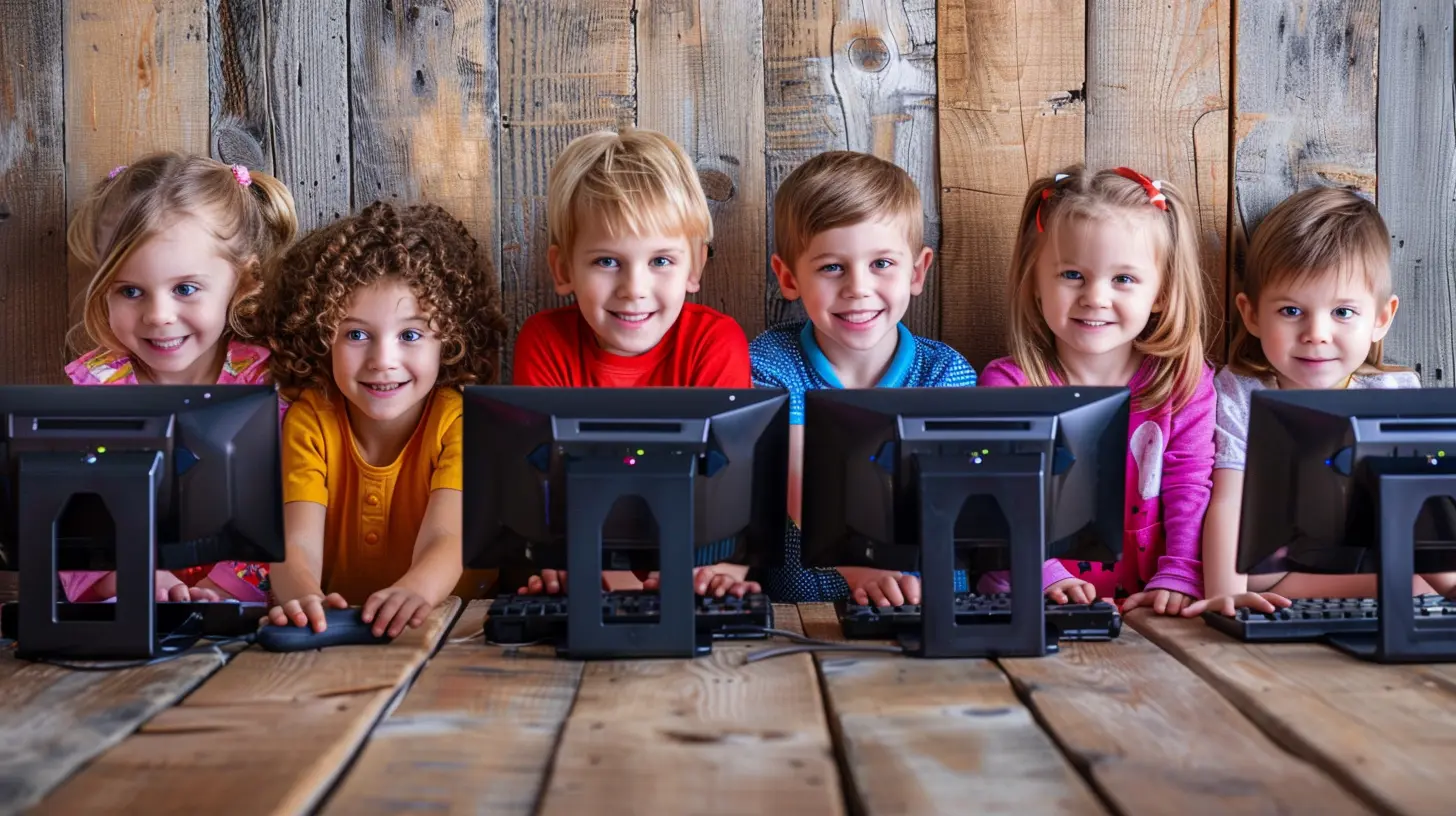The Role of Technology in Early Childhood Development
21 June 2025
Technology has taken over our lives in ways we never imagined. From smartphones to tablets, kids today are growing up in a world that's more digital than ever. But what does that mean for their development? Is screen time helping or hurting them? Parents everywhere are asking these questions, and guess what? The answers aren’t as black and white as we might think.
Let’s dive into the role technology plays in early childhood development—both the good and the not-so-good—so you can make informed decisions about your child’s screen time.

How Technology Affects Cognitive Development
Cognitive development in early childhood is all about how kids think, learn, and solve problems. Traditionally, this happens through hands-on activities and real-world interactions. But in today’s tech-driven world, digital tools are playing a role in shaping those skills too.The Positive Side of Technology
Believe it or not, when used correctly, technology can actually support cognitive development. Here's how:- Interactive Learning Apps – Educational apps geared toward young children can help with problem-solving, memory, and even early math and reading skills. Well-designed programs keep kids engaged and make learning fun.
- Exposure to New Ideas – The internet provides children access to a world of information. Age-appropriate videos, stories, and interactive experiences expose them to ideas beyond what they encounter in their everyday environment.
- Improves Hand-Eye Coordination – Many digital activities, such as drawing apps or interactive games, require kids to use their hands and fingers in precise ways, strengthening their coordination.
The Downsides of Digital Learning
Of course, technology isn’t all sunshine and rainbows. Overuse or bad content can have negative effects, such as:- Shorter Attention Spans – Switching between apps, videos, and games too often can make it harder for kids to focus on one thing for a long period of time.
- Reduced Problem-Solving Skills – When answers are just a tap away, kids may not develop the patience to figure things out on their own.
- Overreliance on Screens – If kids get too used to digital learning, they may struggle with traditional methods like reading books or doing activities that require imagination.

Technology and Social Development
Social development is all about learning how to interact with others, and this is an area where technology can be both a tool and a barrier.How Tech Helps Kids Socially
- Connecting with Family and Friends – With video calls and messaging apps, even young children can stay in touch with long-distance relatives.- Cooperative Games – Multiplayer educational games teach teamwork, problem-solving, and communication skills.
- Educational TV Shows and Videos – When chosen wisely, these can teach kids about emotions, empathy, and social interactions in ways that stick with them.
The Social Risks of Too Much Screen Time
But let’s be real—too much tech time can hurt social skills. Here’s how:- Less Face-to-Face Interaction – Kids need real-life conversations to develop communication skills. Relying too much on screens means they might miss out on non-verbal cues like facial expressions and body language.
- Delayed Speech Development – Excessive screen time, especially passive activities like watching cartoons, has been linked to speech delays in toddlers.
- Less Outdoor Playtime – Kids who spend hours on screens might not engage in enough active play, which is crucial for physical and social development.

The Impact on Emotional Development
Let’s talk feelings. Emotional development is about understanding and managing emotions, and—believe it or not—technology plays a big role in that too.The Good Side of Technology for Emotions
- Teaches Emotional Awareness – Some educational apps and shows are designed to help children understand emotions by showing different feelings in various situations.- Encourages Self-Regulation – Certain tech tools help children learn how to calm down when they feel overwhelmed. Meditation and relaxation apps, for example, can guide kids through deep breathing exercises.
- Provides Comfort and Security – For some children, a favorite show or interactive story can be a source of comfort in stressful situations.
The Potential Emotional Pitfalls
- Instant Gratification Mentality – If kids are constantly entertained by screens, they may struggle with patience and handling boredom.- Increased Anxiety and Frustration – Fast-paced, high-stimulation games can sometimes lead to irritability when kids are forced to stop or when they lose a game.
- Reduced Emotional Connection – Too much screen time can mean fewer opportunities for emotional bonding with parents and caregivers.

Balancing Screen Time for Healthy Development
So, what’s the magic formula? How do we make sure our little ones get the benefits of technology without the downsides?Set Limits on Screen Time
The American Academy of Pediatrics (AAP) suggests:- Under 18 months – Avoid screen time except for video chatting.
- 18-24 months – Limited, high-quality content with parent interaction.
- 2-5 years old – No more than one hour per day of quality programming.
Choose Quality Over Quantity
Not all screen time is created equal. Avoid random YouTube videos or mindless games. Instead, look for:- Educational Apps – PBS Kids, ABCmouse, and Khan Academy Kids offer engaging, safe content.
- Interactive Play – Instead of just watching, find apps that encourage thinking and creative problem-solving.
- Parental Involvement – Watching or playing together makes a huge difference. Talk about what’s happening and ask questions to engage your child.
Encourage a Tech-Life Balance
Technology shouldn’t replace real-world experiences. Make sure your child:- Gets Plenty of Outdoor Play – Running, climbing, and exploring nature are just as crucial as learning online.
- Has Screen-Free Family Time – Meals, bedtime, and playtime should be tech-free zones for bonding and conversation.
- Engages in Hands-On Activities – Encourage reading actual books, doing arts and crafts, and playing with real toys.
Be a Role Model
Kids mimic what they see. If you're glued to your phone, they’ll want to do the same. Show them that life happens beyond the screen by setting your own limits and prioritizing real-world interactions.Final Thoughts
Technology is here to stay, and it’s shaping the way kids grow and learn. When used wisely, it can be a wonderful tool for cognitive, social, and emotional development. But like anything else, balance is key. A mix of screen time and real-world experiences is the best way to ensure your child develops the skills they need to thrive.So, next time you hand your little one a tablet, just remember—it’s not about banning technology, but about using it in ways that truly benefit their growth.
all images in this post were generated using AI tools
Category:
Tech And KidsAuthor:

Noah Sawyer
Discussion
rate this article
2 comments
Wynter Montgomery
Tech can be a toddler's best buddy! Let’s embrace balance—just like a kid on a seesaw, we need both sides!
October 23, 2025 at 3:19 PM

Noah Sawyer
Absolutely! Finding balance is key to maximizing technology's benefits while ensuring holistic development.
Lulu Phelps
Who knew that a toddler's best friend could be a tablet? While we navigate the wild world of tech and tiny tots, let’s remember to balance screen time with playtime! After all, a video of dancing dinosaurs can’t quite beat the real thing—especially when it involves snacks. 🌟📱🦖
June 21, 2025 at 4:34 AM

Noah Sawyer
Absolutely! While technology can enhance learning, real-world experiences and play are essential for holistic development. Balance is key!


